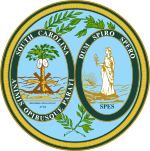This article includes a list of references, related reading, or external links, but its sources remain unclear because it lacks inline citations .(August 2024) |
| |||||||||||||||||
| |||||||||||||||||
Smith: 30–40% 40–50% 50–60% 60–70% 70–80% 80–90% Warren: 30–40% 40–50% 50-60% 60–70% 70–80% 80–90% Pollock: 50-60% Irby: 30–40% | |||||||||||||||||
| |||||||||||||||||
| Elections in South Carolina |
|---|
 |
The 1920 South Carolina United States Senate election was held on November 2, 1920 to select the U.S. Senator from the state of South Carolina. Incumbent Democratic Senator Ellison D. Smith won the Democratic primary and was unopposed in the general election to win another six-year term.



